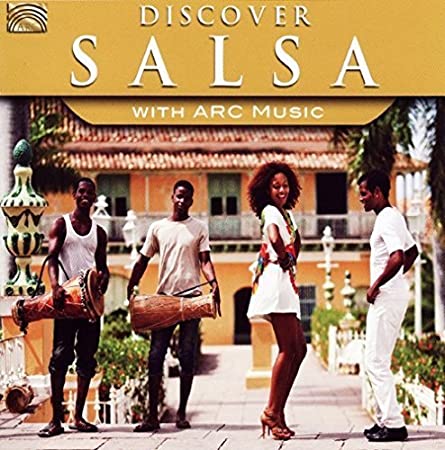Brand from Home | April 19, 2020
- Apr 19, 2020
- 5 min read

Today's recommending listening includes Bing Crosby and Louis Armstrong, an 11-hour playlist featuring Rock & Rock Hall of Fame inductees, lively Salsa, and Classical Nursery Rhymes. Happy listening!
Get a free Glendale Library, Arts & Culture Library eCard instantaneously. It can be used to access our online resources including eBooks, eAudiobooks, eNewspapers, eMagazines, online classes, online tutoring, and learning games, as well as streaming movies and music, and more.Try listening to a streaming Playlist from Freegal Music, Naxos Music Library or Alexander Street free with your library card. Alexander Street will ask for an academic institution, use Glendale Public Library.
Read About Music
The Mutopia Project is a collection of sheet music in the public domain or under creative common licenses you are free to download, modify, print, copy, distribute, perform, and record.
Streaming Music
Vulture, the entertainment website of New York Magazine, has a list of live-streamed concerts that is updated regularly.
The BeatBuds have performed at Brand Library twice on our Music Animated Series. They are performing live every Wednesday at 9:30am on their YouTube channel. They will have an animated preschool Nickelodeon series starting in 2021, so watch out for that too!
The San Francisco Symphony has made their fantastic Keeping Score series available for free on YouTube. Composers such as Ives, Mahler, Copland, Shostakovich and Tchaikovsky are are covered in this documentary/concert series!
Streaming Art

Art21.live, a curated streaming video channel on contemporary art, delivers 24/7 programming to audiences worldwide. The channel draws from over 60 hours of film from the Art21 video library, all hand-selected and programmed by Art21 staff.
Learn About Art

Art Through Time: A Global View, offered through Annenberg Learner. For high school, college, and adult learners, including 13 half-hour video programs, images, text, and course guide. The class explores connections in Western and non-Western art, illuminating the breadth, complexity, and beauty of works produced around the world at different periods of time.

The Met’s Heilbrunn Timeline of Art History pairs essays and works of art with chronologies, telling the story of art and global culture through the Museum’s collection. Authored by The Met's experts, the Timeline comprises 300 timelines, more than 1,000 essays, more than 7,000 objects, and is regularly updated and enriched to provide new scholarship and insights on the collection.
Art Inspiration - Try It at Home
A 'no sew' Sketchbook or Journal part two: Checkerboard binding. This binding is from an 1865 album, described by Betsy Palmer Eldridge, a longtime professional bookbinder and conservator.
Supplies needed: cardboard (2 matching pieces square or rectangle), paper (two colors), glue (glue stick or tacky glue), a little patience!

First you need to make your pages, they all need to be the same size. I took 8.5x11 paper cut in half and folded in half so I have double pages or a folio (a sheet of paper folded once to form two leaves (four pages) of a book).Split your pages into two groups. This binding will also work with groups of two folios if you want more pages.

Glue each hinge onto the fold side of your folio pages, with half of the hinge overlapping the page. Let them dry. Cut the hinges along your marks up to the fold of the folio paper to make four tabs (three cuts).
Keep your pages divided into two groups. For one color/half fold over tabs one and three and glue them down to the side of the folio. For the other half fold over tabs two and four and glue them down. Each folio will now have two tabs out.

Stack two folios in alternating colors (1blue, 2brown) and fold back the tabs from the bottom folio over the top. Apply glue to the top and lay a third (3blue) folio on top glueing the tabs from the first (1blue) to the third (3blue). Continue by folding back the tabs from the second (2brown) and glue the forth (4brown). Repeat until you are out of folio sheets. Let dry.

When you look inside each color should form a matching stripe along the binding.
For the covers: Cut two pieces of cardboard to be slightly larger than your folio pages. Cover them with any paper you have. Cut the paper slightly larger, glue the board down to the paper, trim the corners, and fold and glue the edges in.

Glue your folio page to your cover using the extra tabs on one side. You can cut an end paper to glue over and make a clean finish. On the other side cut your end paper with matching tabs and glue the cover to the folio pages. The major plus of this binding is that the pages lay completely flat making it easy to draw and write.
Let us know how you did on all our try it at home projects with #brandfromhome
Staff e-Recommendations

Looking to pick up a hobby? Hoopla has a great collection of art-instruction books, including Tracy Lee Stum’s The Art of Chalk, which includes input from accomplished artists in the field of chalk and pastels. Although less instruction than I would’ve liked, (this book won’t teach you how to draw) it’ll hopefully give enough advice from artists and spark enough ideas that you’ll want to try to draw anyways. This book works best in tandem with other art-instruction like hand-lettering and other decorative art instruction. The book breaks down the craft for beginners and walks you through designs, techniques, tips, and tools. It answers many questions I had about chalk-board art, like transferring images (projectors, why didn’t I think of that!) and working with color pastels. It dives into layout and emphasis for chalkboard signs which I always find incredibly helpful. What I learned is how much more versatile chalk-board art is. I approached the book wanting to simply know how create sidewalk chalkboard signs and ended up learning blending techniques for larger scale images. Even the idea of working with pastels for coloring instead of colored chalk/chalk markers was a revelation. Someone once told me that good chalkboard signs have so little chalk involved, and this book seems to be the exploration of that idea. -GG

Loving Vincent (2017) This intriguing movie about the life of Vincent van Gogh is beautifully created with hand painted animation by over 100 artists. The backgrounds, characters and many of the scenes are brought to life in the magnificent and colorful style of van Gogh. The story begins more than a year after van Gogh’s death, and follows the journey of Armand Roulin, the son of the postman whom van Gogh immortalized in a portrait. He carries with him the last letter of van Gogh that he was attempting to pass on to Vincent’s brother Theo. As Roulin travels to Auvers, where van Gogh last lived, he encounters many people from the artist’s life. Surprisingly, they all have different perspectives on van Gogh as a person, friend and artist. The question arises: was he a troubled genius or perhaps just an intensely driven artist?
As Roulin speaks to these people in Auvers, it becomes obvious that there are varied opinions about whether van Gogh attempted suicide or was mortally wounded by someone he knew. A cast of characters, including the inn keeper’s daughter, the local boat keeper, Dr. Gachet and his daughter Marguerite, as well as other local figures tell a fascinating story of the circumstances surrounding van Gogh’s final days. Their vivid recollections about Vincent contribute to the mystery of this tragic story.
The painted animation is exquisitely composed to illustrate nuances of van Gogh’s portraits, townscapes and landscapes. I recommend this film to anyone who has an interest in the life and work of the Post-Impressionist master Vincent van Gogh. -CV
Covid-19 Resources
Reliable information about the coronavirus (COVID-19) is available from the World Health Organization, the California Department of Public Health and Los Angeles County Public Health Department and City of Glendale.
















Comments